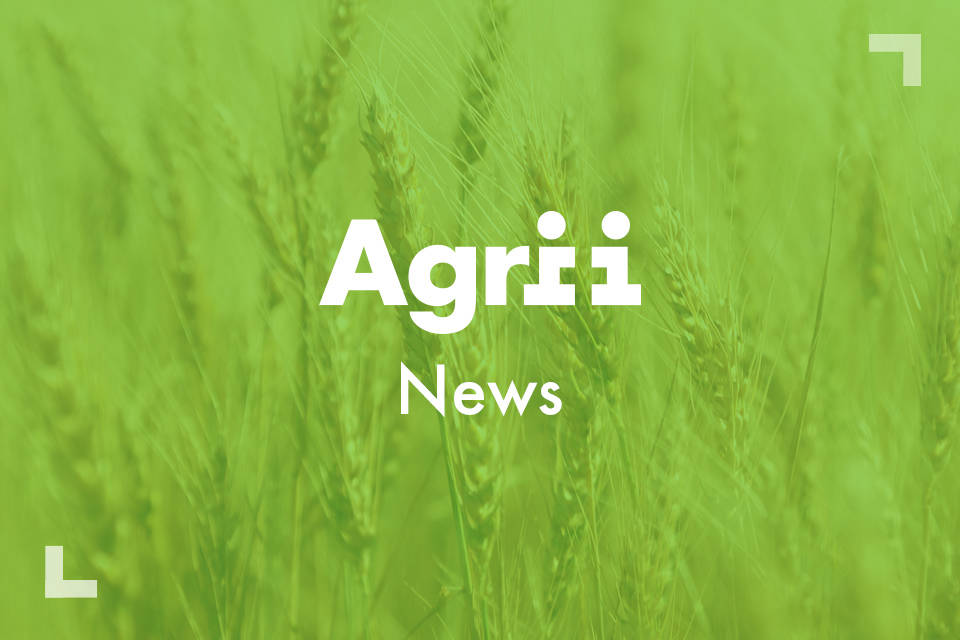
Successful OSR Establishment: A Proven Six-Point Strategy
News - 24.05.24
This article features:
David Thompson - Operations Manager, Eastbury Estates
Jazzmyn Jex - Development Agronomist, Agrii
Despite serious pressures from flea beetles, slugs, and game birds, as well as the wettest winter on record at Tarrant Gunville near Blandford, all but a few of the 100 hectares of DK Exsteel planted at Eastbury Estates this season are going through to harvest in gratifyingly good condition.
This clearly proves the value of the six-point establishment recipe developed through almost a decade of research and development on the Farquharson family’s 480 ha Dorset iFarm, ensuring the crop maintains its key role in the downland rotation.

Dave Thompson & Jazzmyn Jex Check Their DK Exsteel At Flowering
The Importance of Winter OSR in Crop Rotation
Winter OSR is crucial in keeping on top of black-grass here. It allows the most effective use of clethodim and propyzamide both ahead of and after the first cereals, which are the Number One earners.
Enhancing the Rotation with OSR
In recent years, the rotation has been stretched and includes an extra break. Now, oilseed rape is followed with wheat or hybrid seed barley, a second cerea (either wheat or spring barley), spring beans, then wheat or seed barley again before going back to OSR. This way, at least two good grassweed clean-ups are achieved every six years.
Overcoming Challenges in OSR Cultivation - Lessons from 2019
Back in 2019, with only 33ha of the 70ha planted surviving to harvest and averaging just 3.3t/ha, there were serious question marks over OSR at Eastbury.
A 3.9t /ha average wherever the crop established well enough in the very challenging season, coupled with a disappointing experience with winter beans, however, persuaded the family to stick with it and do everything possible to improve establishment success.
Six-Point Establishment Recipe
As part of the iFarm network, a huge amount has been learned about establishing winter OSR from the Agrii trials over the years. To keep the crop in the rotation, efforts had to be redoubled to improve the establishment on which its performance depends.
The Six-Point Establishment Recipe
1. Fast-Developing Hybrid
Working closely with agronomists, the focus is now on the six areas of establishment agronomy found to be most crucial. The fastest developing hybrid is drilled into a long cereal stubble with the least possible soil disturbance.
2. Optimal Drilling Time
Drilling is avoided either too early or too late, fertilizer is placed with the seed, and, wherever possible, a buckwheat-based companion crop is sown around 10 days ahead of the OSR.
3. Minimal Soil Disturbance
A 4-6” stubble is left into which the companion is sown with an old Moore Unidrill in mid-August as soon as the cereal straw is baled and removed.
4. Precision Fertilization
Towards the end of August, the chosen hybrid is drilled at 50 seeds/m2 with a starter fertilizer placed in the row using a 6m Horsch Sprinter with Dutch openers, disturbing as little of the soil and emerging companion crop as possible.
5. Companion Cropping Strategy
This and a no pre-em/no early graminicide policy mean the emerging crop stays well concealed from both the beetles and game birds until it bursts through the covering canopy, by which stage it is safely established.
6. Optimal Timing
The last week of August is invariably the optimum timing. It means the OSR emerges comfortably after the initial peak of flea beetle migration. This works well alongside everything done to discourage the adults on the one hand and get the crop up and away fast on the other.

DK Exsteel's Thick Collar And Branching Right From The Base Are What Jazzmyn Jex Is Looking For In An OSR Crop
Benefits of DK Exsteel Winter OSR
This recipe has proved highly effective, allowing the Eastbury Estates OSR to consistently average between 3.7t/ha and 4.2t/ha – depending on conditions – since 2020.
And this with new crops emerging in close proximity to crops harvested the previous season in the ‘non-blocked’ rotation.
Performance Under Pressure
In a season where the challenge from both CSFB and slugs has been particularly intense, this year’s crop of DK Exsteel is underlining the value of the approach.
A local deer problem and 10 days of hot, dry weather in early September didn’t help. However, it powered away from late September to reach 75% crop cover and a GAI of 2.0 by mid-November and came through the very wet winter with a population of around 30 plants/m2 to develop a nicely-branched, well-podded canopy.
Fast Autumn Development
Fast autumn development rather than just vigour is one of the most important factors in getting a good crop. OSR’s ability to tolerate flea beetle and slug damage is all about how much leaf area it puts on ahead of winter. Fast development is equally important in helping the crop grow through its companion.
Superior Hybrid Varieties
Speed of development across varieties and treatments has been monitored in all trials here since 2017, using a combination of GAI, NDVI, and manual plant counts and leaf size measurements.
Hybrids are always noticeably superior to conventional varieties in almost every respect, and DK Exsteel has long been the best autumn developer of all.
Consistent Top Performer
It’s no coincidence that this hybrid has proved the most consistently top-performing variety in national trials with more than 40 varieties for every one of six years in which it has been included.
This and the considerable gross output advantage it has shown over the previous farm favorite, Inv1035, is why the farm’s entire crop is down to the variety this season.
Additional Benefits
DK Exsteel is also valued for its excellent all-round disease and pod shatter resistance, not to mention standing power. But its superior autumn development ability is what really sets it apart, particularly when autumn conditions are challenging.

Direct Drilling Into Long Cereal Stubble Already Sown With A Companion Crop
Companion Crop-Based Establishment Approach
Of course, the right start is essential to allow the variety to express this character. This is why the estate’s companion crop-based establishment approach is so important.
Even on a farm that has never grown OSR, surprising levels of adult beetles on freshly moved soil ahead of other autumn crops have been recorded, underlining the importance of minimal soil disturbance – even when establishing a companion ahead of the crop.
Choosing the Right Companion Crops
A range of companions have been tried at Eastbury over the years. This includes phacelia, which proved really good at both deterring pests and encouraging bees but far too competitive in a mild winter, cutting crop yields by fully 1.4t/ha.
Current Companion Crop Strategy
The standard now is 10kg of buckwheat, and this season a combination of fenugreek with buckwheat and vetch has been particularly valuable, with the curry smell being off-putting to the game birds that have always been such a headache.
Minimum Disturbance Drilling
Minimum disturbance companion crop drilling into long stubble with the disc-based Unidrill reduces the initial attractiveness of the ground to adult beetles.
Direct Sprinter drilling the OSR into the emerging companion – again with the least possible soil movement to attract pests – means it emerges well-disguised beneath a 2-3 week old companion and volunteer canopy.
Effective Pest Management in OSR
The companion dies back just as the OSR grows away strongly and clethodim deals with any cereal volunteers and holds back the black-grass which is hit hard with propyzamide at its best timing, together with Belkar (Arylex + picloram) for extra broad-leaf control wherever necessary. This is a really effective strategy for the rotation as much as the crop itself.
Success with OSR - The SFI Oppportunity
Working closely with their Agrii agronomy team, Eastbury Estates has found a reliable way of ensuring winter oilseed rape retains its key grassweed control role in a profitable cereal-based rotation that would otherwise be hard to maintain.
The crop certainly doesn’t come without risk, not least with an up-front cost of around £250/ha before Christmas. But the establishment approach developed really helps to minimize the risk of the crop failing to turn a profit while fulfilling its important agronomic place in the rotation.
All the more so with SFI payments totalling around £200/ha now on offer for the combination of direct drilling, companion cropping, no insecticide use, and variable rate nitrogen already employed in the production regime.
Join Our Community

Agrii X
We love engaging with clients and partners. Give us a follow and let's share stories for the community.

Agrii Instagram
A picture paints a thousand words. Follow us on Instagram to see what we are up to.

Agrii Facebook
Follow us on the worlds biggest social media site for the latest news and events straight to your feed.

Agrii LinkedIn
If you are all about the business, connect with us on LinkedIn to build your network
Stay In Touch

Newsletter Sign-Up
Receive email updates on topical news and information from around Agrii and UK Farming.

Listen To Our Podcasts
Listen to the Tramlines Podcast. Fortnightly chat about agriculture and trials with your host Tony Smith.

Agrii Insights
Read essential agri intelligence for profitable farming.

Find an Event
Join us for our upcoming events and tours.



